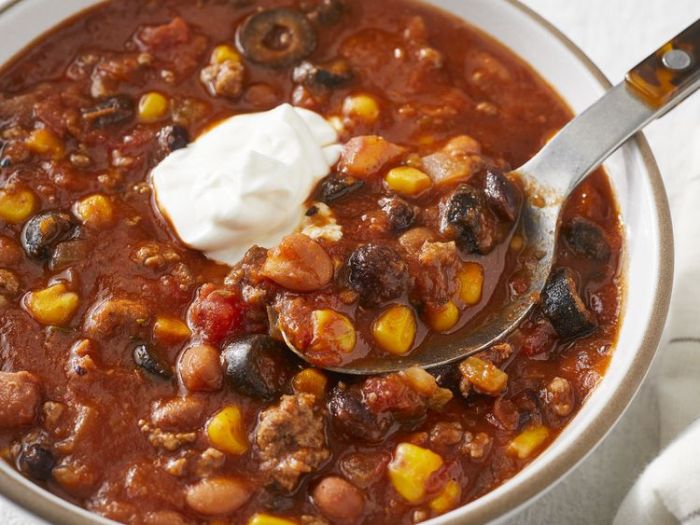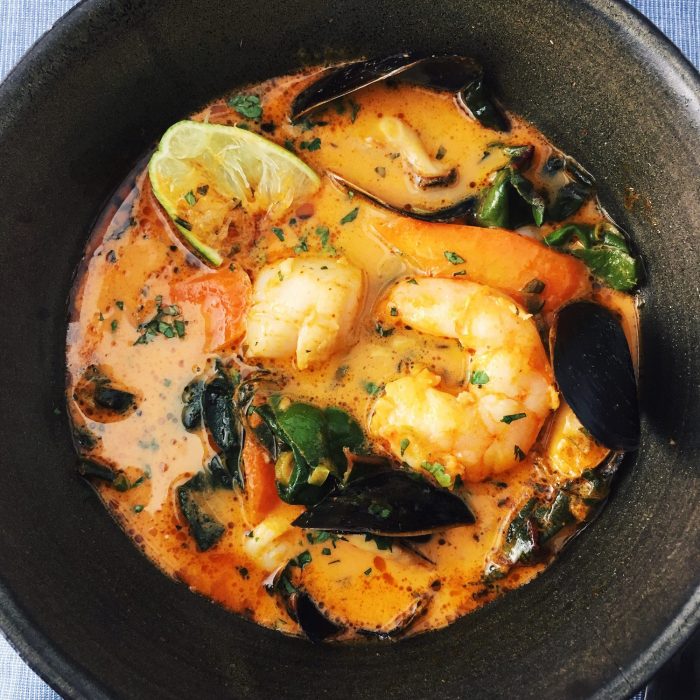Understanding Chinese Vegetable Soup
Recipe chinese vegetable soup – Chinese vegetable soup, a staple in countless households across China, boasts incredible diversity. This exploration delves into its core components, regional variations, and common preparation methods, providing a foundational understanding of this culinary cornerstone.
Typical Ingredients and Regional Variations
A basic Chinese vegetable soup typically includes a flavorful broth (often chicken, pork, or vegetable), a variety of leafy greens (bok choy, spinach, gai lan), root vegetables (carrots, daikon radish), mushrooms (shiitake, wood ear), and sometimes tofu or noodles for added protein and texture. Regional variations significantly impact flavor profiles. Northern Chinese soups often feature heartier ingredients and richer broths, reflecting the colder climate and culinary traditions.
Southern Chinese soups, conversely, tend to be lighter, featuring a wider array of fresh greens and a focus on delicate flavors.
Common Cooking Methods
The preparation of Chinese vegetable soup is straightforward, generally involving a combination of simmering and stir-frying. Vegetables are often stir-fried briefly before being added to the simmering broth to retain their vibrant color and crisp texture. The broth is typically seasoned with soy sauce, salt, ginger, and garlic, with optional additions like rice wine or sesame oil for depth of flavor.
The cooking time varies depending on the type and quantity of vegetables used, but generally ranges from 20 to 45 minutes.
Basic Chinese Vegetable Soup Recipe, Recipe chinese vegetable soup
This Artikels the steps for preparing a simple yet flavorful Chinese vegetable soup. Precise timings will depend on the type of vegetables and stovetop.
| Step Number | Action | Ingredients | Time |
|---|---|---|---|
| 1 | Prepare Broth | Water, Chicken/Vegetable Stock | 15-20 minutes (for stock) |
| 2 | Stir-fry Aromatics | Ginger, Garlic, Scallions | 2-3 minutes |
| 3 | Add Vegetables | Carrots, Bok Choy, Mushrooms | 5-7 minutes |
| 4 | Simmer | Broth, Soy Sauce, Salt | 15-20 minutes |
| 5 | Season and Serve | Sesame Oil, Pepper | 1-2 minutes |
Ingredient Exploration: Recipe Chinese Vegetable Soup
The success of any Chinese vegetable soup hinges on the quality and selection of its ingredients. This section explores the common vegetables, the role of broth, and the impact of different flavor components.
Common Chinese Vegetables and Nutritional Benefits
- Bok Choy: Rich in vitamins A and C, low in calories.
- Gai Lan (Chinese Broccoli): Excellent source of vitamins K and C, fiber.
- Spinach: High in iron, vitamins A and K.
- Mushrooms (Shiitake, Wood Ear): Good source of B vitamins, antioxidants.
- Carrots: Rich in beta-carotene, fiber.
- Daikon Radish: Low in calories, good source of vitamin C.
- Celery: Contains antioxidants, low in calories.
- Tofu: Plant-based protein source, calcium.
- Bean Sprouts: Rich in vitamins and minerals, low in calories.
- Bamboo Shoots: Low in calories, source of fiber.
The Role of Broth
The broth forms the foundation of the soup’s flavor. Chicken broth lends a savory, umami richness, while vegetable broth offers a lighter, cleaner taste. Pork broth provides a more intense savory flavor. The choice of broth significantly impacts the overall taste profile.
Texture and Taste Comparisons
The contrasting textures and tastes of various vegetables contribute to the soup’s complexity. The crispness of bok choy contrasts with the softer texture of carrots. The earthy flavor of mushrooms complements the sweetness of carrots and the slight bitterness of gai lan. This interplay of textures and tastes creates a well-rounded sensory experience.
Impact of Different Soy Sauces
Different soy sauces impart distinct flavors. Light soy sauce provides a salty, savory base, while dark soy sauce adds a richer, deeper umami flavor and a darker color. The choice of soy sauce influences the overall saltiness and depth of the soup’s flavor profile.
Recipe Variations and Adaptations
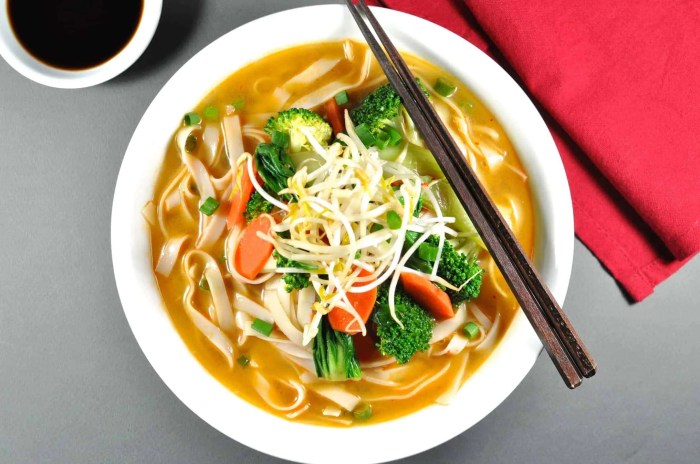
Source: recipetineats.com
The versatility of Chinese vegetable soup allows for endless creative adaptations. This section explores three unique variations and provides guidance on adapting the recipe to suit diverse dietary needs and preferences.
Three Unique Chinese Vegetable Soup Recipes
- Spicy Sichuan Vegetable Soup: Use a spicy broth base (e.g., with Sichuan peppercorns, chili oil), add ingredients like chili garlic sauce, and include vegetables like Napa cabbage, wood ear mushrooms, and bean sprouts for a fiery kick.
- Savory Mushroom and Tofu Soup: Focus on a variety of mushrooms (shiitake, oyster, wood ear), silken tofu, and a flavorful vegetable broth. Season with light soy sauce, ginger, and a touch of sesame oil for a savory and umami-rich soup.
- Sweet and Sour Vegetable Soup: Use a combination of sweet and sour ingredients such as a touch of brown sugar, rice vinegar, and a light soy sauce base. Include vegetables like carrots, snow peas, and bell peppers for a bright, tangy flavor.
Dietary Adaptations
Adapting recipes is straightforward. For vegetarian/vegan options, simply omit meat-based broths and use vegetable broth. Gluten-free adaptations require using tamari or coconut aminos instead of soy sauce. For low-sodium versions, reduce the amount of soy sauce and salt.
Ingredient Substitutions
If certain ingredients are unavailable, substitutions are readily available. For example, if gai lan is unavailable, substitute with broccoli or spinach. If shiitake mushrooms are unavailable, cremini or button mushrooms work well.
Controlling Saltiness and Spiciness
Adjust the amount of soy sauce and salt to control the saltiness. For spiciness, start with a small amount of chili oil or chili flakes and add more to taste, ensuring the spice level suits individual preferences.
Presentation and Serving Suggestions
The presentation of Chinese vegetable soup enhances the dining experience. This section explores attractive garnishes, complementary dishes, and ideal serving methods.
Garnishing the Soup
A simple yet elegant garnish elevates the visual appeal. Finely chopped scallions, a drizzle of sesame oil, and a sprinkle of toasted sesame seeds create a visually appealing and flavorful finish. A few sprigs of fresh cilantro add a pop of color and a hint of freshness.
Accompanying Dishes
Dumplings, steamed rice, or steamed buns are excellent accompaniments to Chinese vegetable soup. The dumplings provide a contrasting texture and savory flavor, while rice or buns offer a neutral base to absorb the soup’s flavors.
Serving Suggestions
| Soup Variation | Serving Suggestion | Description | Ideal Occasion |
|---|---|---|---|
| Spicy Sichuan Vegetable Soup | Steamed Rice | Neutral base to balance the spice | Casual dinner, cold weather |
| Savory Mushroom and Tofu Soup | Pan-fried Dumplings | Adds texture and savory flavor | Lunch, light dinner |
| Sweet and Sour Vegetable Soup | Steamed Buns | Soft texture complements the soup | Casual gathering, family meal |
Ideal Temperature and Serving Vessels
Serve the soup hot, ideally in a warm bowl to maintain its temperature. Traditional Chinese soup bowls, with their slightly curved sides and comfortable handles, are ideal serving vessels. A simple, elegant bowl allows the soup’s vibrant colors and garnishes to shine.
Cultural Context
Chinese vegetable soup holds a significant place in Chinese culinary history and culture. This section explores its cultural significance, historical evolution, and comparison with similar soups from other cultures.
Cultural Significance
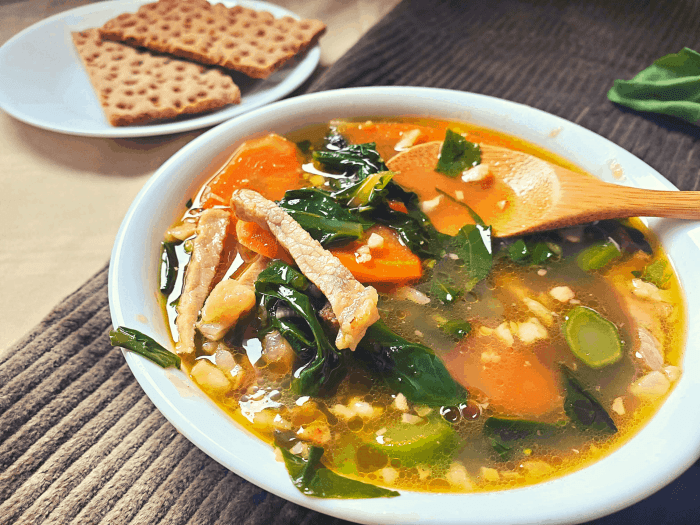
Source: thehomeintent.com
Chinese vegetable soup reflects the importance of fresh, seasonal ingredients and balanced nutrition within Chinese cuisine. It’s often served as a comforting and nourishing meal, symbolizing family and togetherness. The soup’s simplicity and adaptability reflect the practical and resourceful nature of Chinese cooking traditions.
A simple recipe for Chinese vegetable soup often features a light broth and seasonal greens. For a richer, creamier alternative, consider exploring different flavor profiles; perhaps you’d enjoy a hearty, savory option like the pork chop rice cream of mushroom soup recipe , which offers a delightful contrast. Returning to lighter fare, a well-made Chinese vegetable soup is always a refreshing and healthy choice.
Historical Evolution
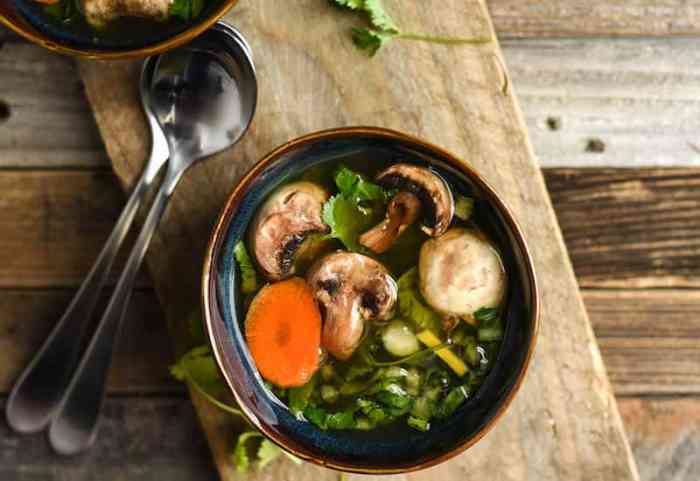
Source: diycandy.com
The evolution of Chinese vegetable soup is intertwined with the history of Chinese agriculture and culinary practices. Early versions likely relied on readily available local vegetables, evolving over centuries to incorporate a wider range of ingredients and regional variations. The soup’s adaptability allowed it to thrive across different regions and social classes.
Comparison with Other Cultures
While many cultures feature vegetable soups, Chinese vegetable soup distinguishes itself through its unique blend of ingredients, flavor profiles, and cooking techniques. Compared to Western vegetable soups, which often emphasize creaminess or heavy broths, Chinese vegetable soups generally prioritize a lighter, cleaner taste with a focus on fresh, vibrant vegetables.
Answers to Common Questions
Can I use frozen vegetables in this soup?
Yes, frozen vegetables work well, but ensure they are thawed before adding them to prevent overcooking.
How long can I store leftover soup?
Store leftover soup in an airtight container in the refrigerator for up to 3-4 days.
Can I make this soup in a slow cooker?
Yes, slow cookers are ideal for this soup. Adjust cooking times accordingly.
What are some good alternatives to soy sauce?
Tamari or coconut aminos are good gluten-free alternatives. For a less salty option, reduce the amount used.

